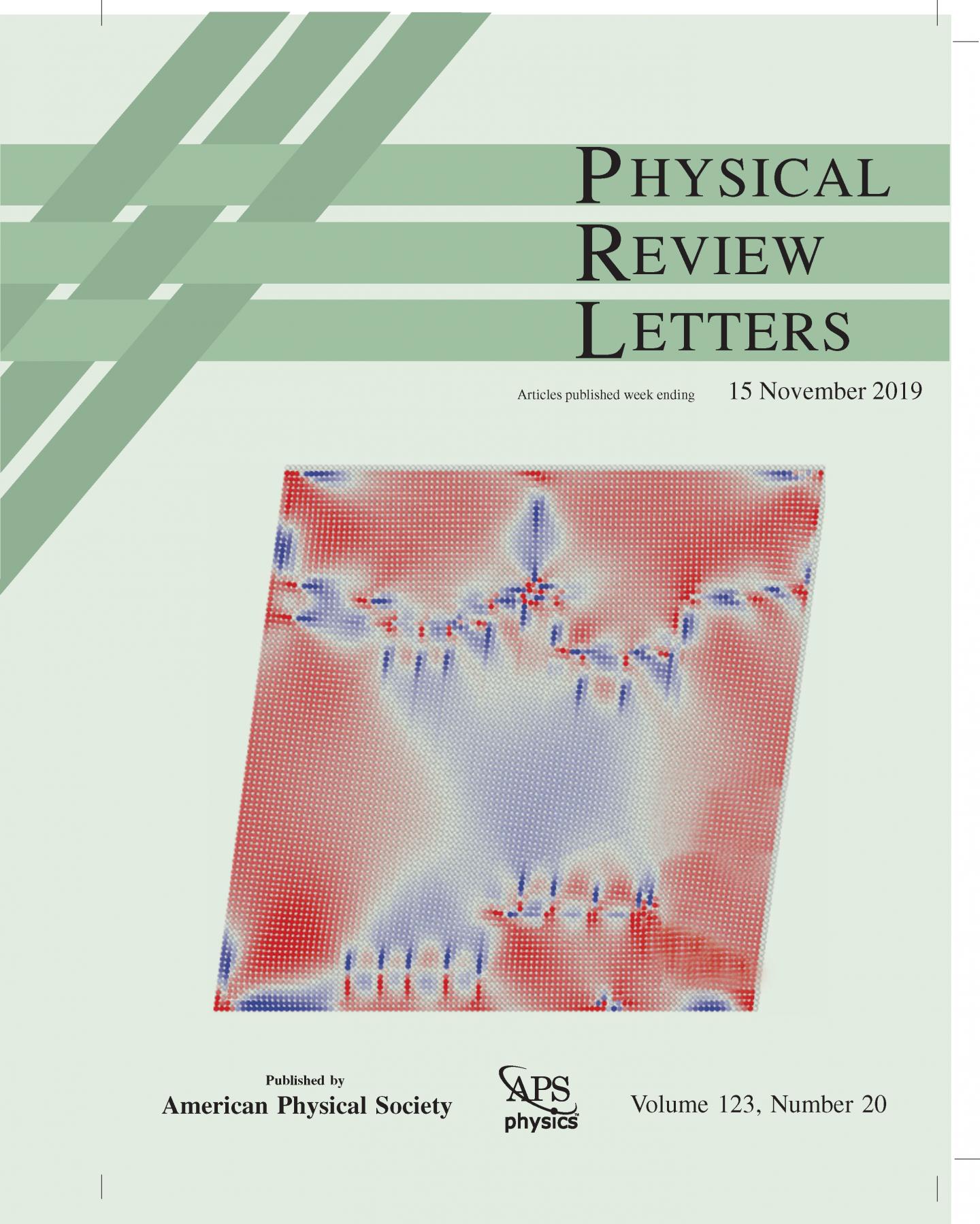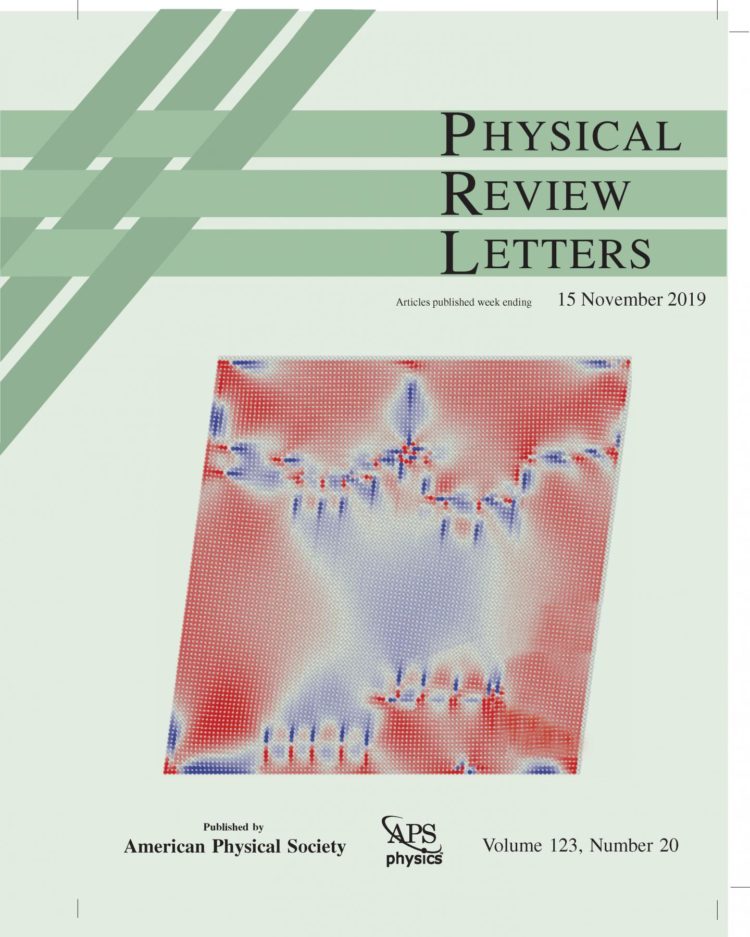A study published in the prestigious Physical Review Letters

Credit: PRL Politecnico di Milano
Dutch artist M.C. Escher’s most famous drawing, “Circle Limit IV (Heaven and Hell)”, shows angels and demons in a tessellation that fills a circle without empty spaces. This masterful woodcut inspired an international partnership of researchers including Politecnico di Milano Physics Department to author the cover-story article published in Physical Review Letters (*).
This free and unconventional work-of-art has provided a valuable assistance to science.
The discovery
The researchers of Professor Paolo Biscari’s group, together with their colleagues discovered that the arrangement of angels and demons in the famous woodcut makes it possible to predict how a crystalline body will change its shape when subject to external action.
Escher’s woodcut is linked to the work of mathematicians who in the middle of the last century were exploring the properties of hyperbolic spaces:
The study’s subject showed a connection between these spaces and everyday phenomena such as the permanent plastic deformation of matter.
The work-of-art sparked a new approach to the mathematical description of complex material deformation phenomena problem.
The new approach mooted by the researchers indicates how crystalline lattice shapes can be associated with points in the hyperbolic space. During its deformations, the material changes shape, passing e.g. from one Escher’s angelic image to the next angel’s shape.
Crystal plasticity is due to the interactions of lattice defects that glide under the effect of the applied forces.
The model promises to become a new useful tool for the study and numerical simulation of microscopic plastic phenomena. Conventional theories cannot correctly describe many properties such as mechanical strength and its unpredictable fluctuations, which can generate true plastic avalanches.
Controlling these phenomena opens new paths for the design and development (guided by theory and simulation) of new materials to optimise micro-manufacturing processes.
###
Landau-type theory of planar crystal plasticity
R. Baggio, E. Arbib, P. Biscari, S. Conti, L. Truskinovsky, G. Zanzotto and O. U. Salman
Phys. Rev. Lett., 123, 205501 (2019)
Media Contact
Cristina Perini
[email protected]
39-022-399-2508
Original Source
https:/
Related Journal Article
http://dx.





